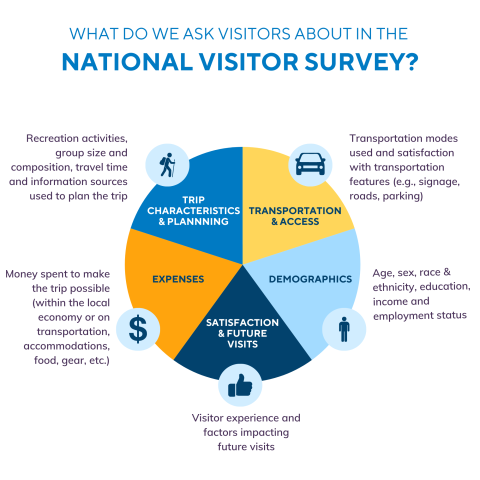States
Alabama, Alaska, Arizona, Arkansas, California, Colorado, Connecticut, Delaware, Florida, Georgia, Guam, Hawaii, Idaho, Illinois, Indiana, Iowa, Kansas, Kentucky, Louisiana, Maine, Maryland, Massachusetts, Michigan, Minnesota, Mississippi, Missouri, Montana, Nebraska, Nevada, New Hampshire, New Jersey, New Mexico, New York, North Carolina, North Dakota, Ohio, Oklahoma, Oregon, Pennsylvania, Puerto Rico, Rhode Island, South Carolina, South Dakota, Tennessee, TexasThe National Wildlife Refuge Visitor Survey (National Visitor Survey) is a continuous monitoring effort aimed at learning more about visitors to national wildlife refuges and their experiences on refuges. More than 20,000 visitors have responded to the voluntary survey, allowing the Service to better understand visitor demographics, satisfaction, trip characteristics and planning, spending, and how management or ecosystem changes might affect future recreation participation. This information helps us better meet the needs of visitors and understand how trends are changing over time.
The National Visitor Survey provides information that is used to:
- Inform decisions about managing recreation and improving access
- Inform transportation and visitor services planning
- Demonstrate the economic value that refuges provide to local communities
- Develop strategic communications with current and future visitors
- Inform infrastructure priorities, and ensure resources are protected while providing quality visitor experiences
Understand who is being excluded from access to nature-based recreation, including those from underserved or marginalized communities
Participating refuges are surveyed once every five years to understand change over time. The National Visitor Survey completed its first cycle in 2023 with 141 refuges participating. This information has been compiled into a national report (available here in February 2025), which provide results for the Refuge System as a whole.
In addition to providing valuable information on refuge visitors, the project employs 12-16 American Conservation Experience interns per year as survey recruiters. Interns travel across the country in teams, spending two weeks sampling at a refuge before moving to the next. Interns receive a stipend, housing, an education award, and Public Land Corps certification, which affords them a special hiring authority for positions in federal land management agencies like the U.S. Fish and Wildlife Service.
Individual Refuge Results
Results are also available at the refuge level.






